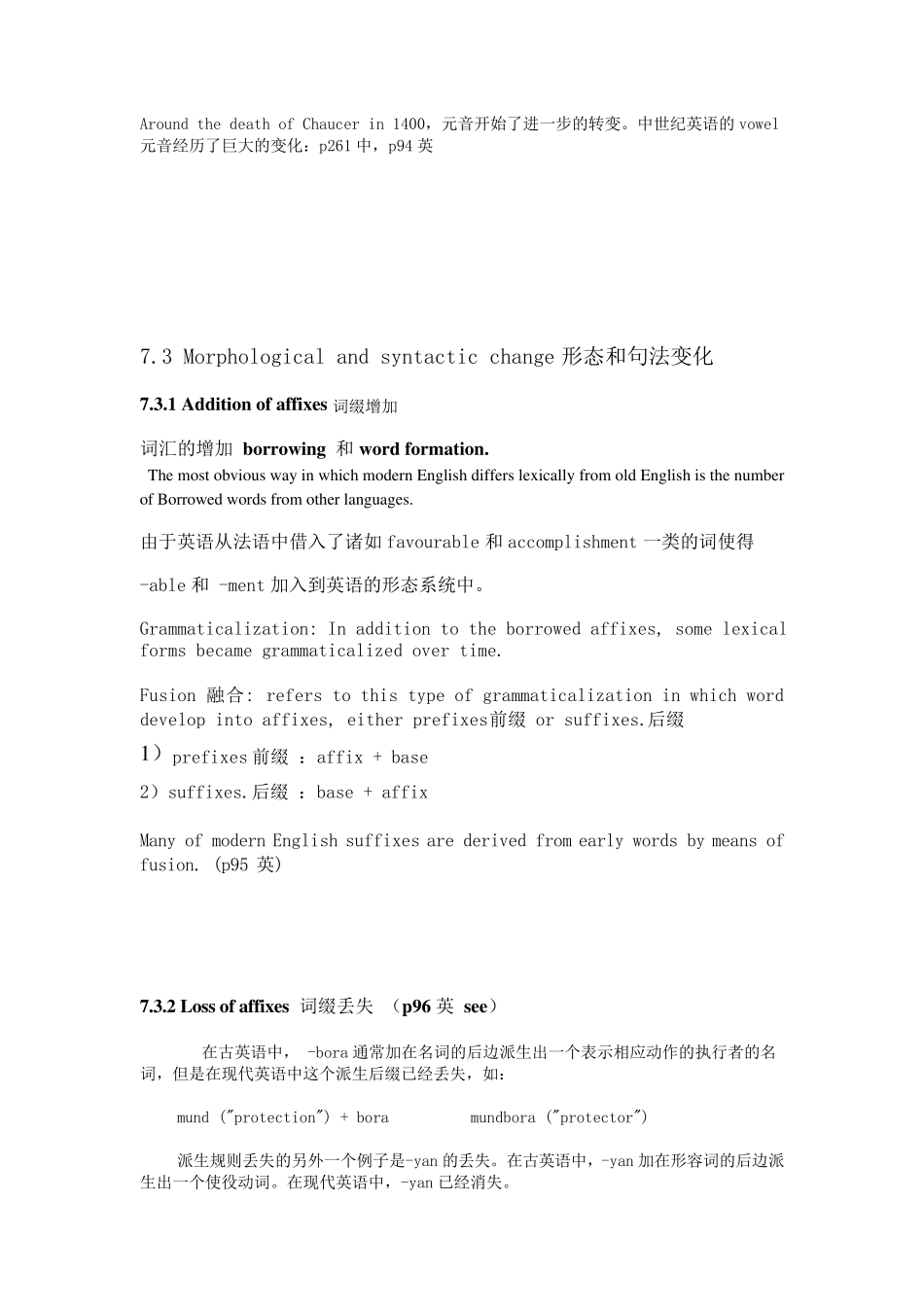Chapter 7 Language change 语言变化 知识点: 1. *Definition: clipping; blend; acronym; back-formation 2. Morphological and syntactic change 3. *Vocabulary change 4. Some recent trends in language change 5. Causes of language change 考核目标: 识记:Definition: clipping; blend; acronym; back-formation 领会:Morphological and syntactic change; Vocabulary change 简单应用:Some recent trends in language change; Causes of language change 一、定义 1. Clipping 略写词:A kind of abbreviation of otherwise longer words or phrases. 指比较长的词或短语的缩写 2. Blending 混合法:A process of forming a new word by combining parts of two other words. 3. Acronym 首字母缩略词 :words derived from the initials of several words通过组合每个词的首位字母构成新词 4. Back-formation 逆向构词法: new words are formed by taking away the suffix of an existing word. 新词可以通过“去掉”现存的词的后缀而被创造出来 二、知识点 7.2 Phonological changes 元音变化 One of the most obvious change in English is the systematic and regular change in the Vowel Change: Old English 古英语 Modern English 现代英语 [ā] (如 在 arm 中 ) [ ] stān stone hām home wrāt wrote rād rode Around the death of Chaucer in 1400,元音开始了进一步的转变。中世纪英语的vowel元音经历了巨大的变化:p261 中,p94 英 7.3 Morphological and syntactic change 形态和句法变化 7.3.1 Addition of affixes 词缀增加 词汇的增加 borrowing 和 word formation. The most obvious way in which modern English differs lexically from old English is the number of Borrowed words from other languages. 由于英语从法语中借入了诸如 favourable 和 accomplishment 一类的词使得 -able 和 -ment 加入到英语的形态系统中。 Grammaticalization: In addition to the borrowed affixes, some lexical forms became grammaticalized over time. Fusion 融合: refer...


